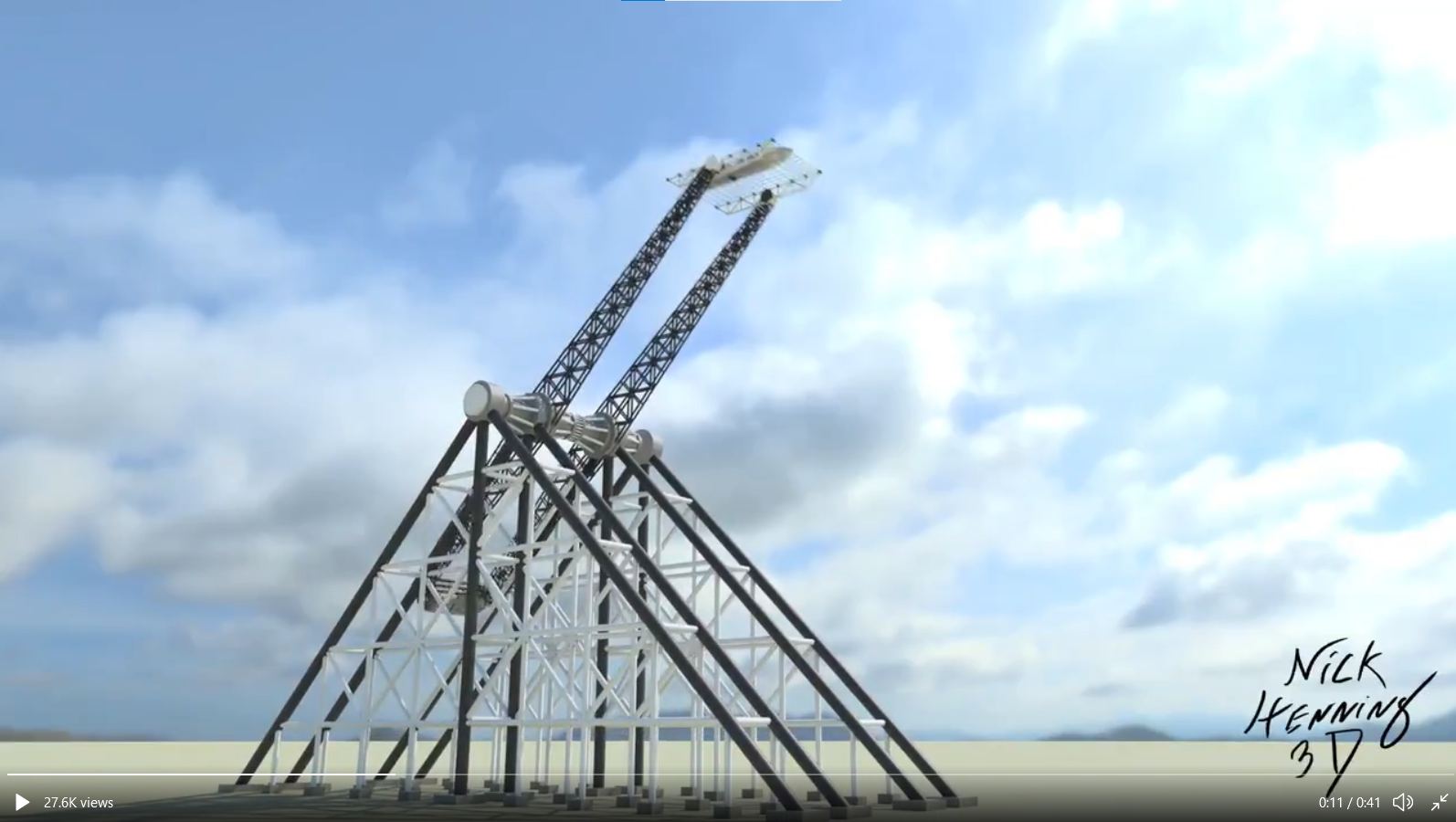Thanks to Musk’s preference for sharing his ideas directly with the public, SpaceX is inundated with all kinds of proposals from citizen scientists and space-exploration enthusiasts – some of which are practical and some outlandish. This latest proposal definitely straddles these two categories! In an animation shared via Twitter, 3D digital artist Nick Henning offered an alternative vision for a SpaceX tower that could “catch” the Super Heavy.
For years, Musk has been keeping the public apprised of his company’s progress with the Starship super-heavy launch system. Once complete, this will be the first totally reusable rocket and the most powerful launch system ever built. This two-stage vehicle will consist of a spacecraft element (the Starship) and a first-stage rocket booster (Super Heavy).
A few months ago, Musk related via Twitter how he and SpaceX were investigating a special launch tower that could help retrieve the Super Heavy booster. This would set it apart from the Falcon 9 and Falcon Heavy, which rely on their complement of Raptor engines to make a controlled descent, then land using a series of deployable legs.
This tower would “catch” the Super Heavy and lower it to slowly onto the landing pad. As Musk put it at the time:
“We’re going to try to catch the Super Heavy Booster with the launch tower arm, using the grid fins to take the load… Saves mass & cost of legs & enables immediate repositioning of booster on to launch mount—ready to refly in under an hour.”
Based on that description, another 3D designer (Youtube handle Mini3D) created the animation you see above. During a more recent exchange, Musk reiterated the idea in response to a tweet from a follower who was expressing admiration for SpaceX’s and its ongoing commitment to creating fully reusable launch systems.
“Starship booster, largest flying object ever designed, will be caught out of sky by launch tower,” Musk tweeted. “Big step forward, as reflight can be done in under an hour.”
Another user joined the thread and asked whether SpaceX would “catch” the Starship as well, or rely on a set of deployable landing legs. The question has been paramount since SpaceX began high-altitude flight tests with Starship prototypes. To date, all four prototypes (which rely on landing legs) have suffered mishaps and either exploded on the pad (SN8, SN9, and SN10), or in midair (SN11). In response, Musk tweeted the following:
“Ideal scenario imo is catching Starship in horizontal “glide” with no landing burn, although that is quite a challenge for the tower! Next best is catching with tower, with emergency pad landing mode on skirt (no legs).”
This inspired a bold response from 3D digital artist Nick Henning, who posted a response a few days later (on April 15th, 2021). In a 3D animation that Henning made himself, he showed how a “crazy big catch tower” could cradle the Starship after it reoriented itself in the air (aka. the “belly-flop” maneuver) and made its horizontal descent. This would do away with the tricky engine reignition and landing burn.
It is at this point that the Starship prototype swings its back end around and lowers itself onto the landing pad. Instead, Henning produced a variant of the launch tower that relied on a cradle and a counterweight. As you can see from the video (posted above), the Starship would land horizontally on the cradle (i.e., no landing burn), which would absorb the force of the fall and come to a rest.
In practice, the concept looks a lot like a swing set, or possibly a reverse-trebuchet – but where the Starship is the missile. Henning himself expressed doubt that the concept would solve SpaceX’s current quandary. “This crazy big catch tower may be up to the challenge?” he wrote. “But probably not…” Nevertheless, it does illustrate how the challenges posed by reusable launch vehicles are leading to all kinds of innovative solutions.
It also shows how visualizations can help ideas from the theory stage to the point where they become standard practice. Other animations that have been contributed in recent years include a rendering of the Starship conducting the belly-flop maneuver and soft landing and the radical proposal known as the “artificial gravity Starship.”

